Caleb Phillips
VASTA: A Vision and Language-assisted Smartphone Task Automation System
Nov 04, 2019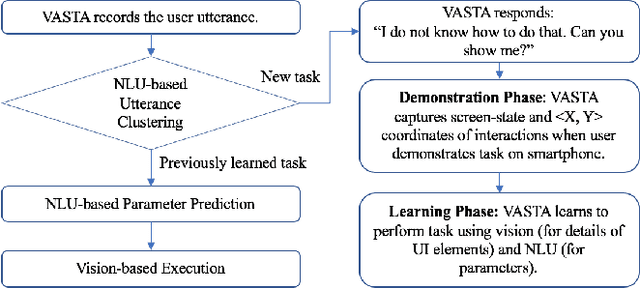

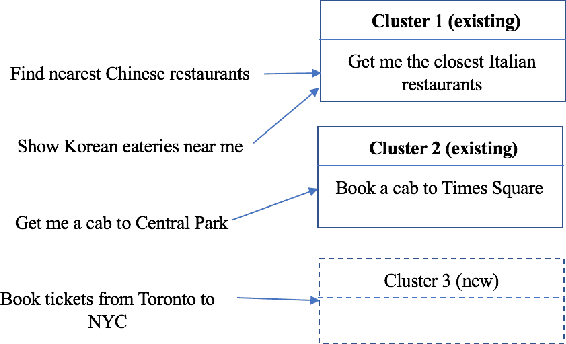

Abstract:We present VASTA, a novel vision and language-assisted Programming By Demonstration (PBD) system for smartphone task automation. Development of a robust PBD automation system requires overcoming three key challenges: first, how to make a particular demonstration robust to positional and visual changes in the user interface (UI) elements; secondly, how to recognize changes in the automation parameters to make the demonstration as generalizable as possible; and thirdly, how to recognize from the user utterance what automation the user wishes to carry out. To address the first challenge, VASTA leverages state-of-the-art computer vision techniques, including object detection and optical character recognition, to accurately label interactions demonstrated by a user, without relying on the underlying UI structures. To address the second and third challenges, VASTA takes advantage of advanced natural language understanding algorithms for analyzing the user utterance to trigger the VASTA automation scripts, and to determine the automation parameters for generalization. We run an initial user study that demonstrates the effectiveness of VASTA at clustering user utterances, understanding changes in the automation parameters, detecting desired UI elements, and, most importantly, automating various tasks. A demo video of the system is available here: http://y2u.be/kr2xE-FixjI
Message-passing neural networks for high-throughput polymer screening
Jul 26, 2018
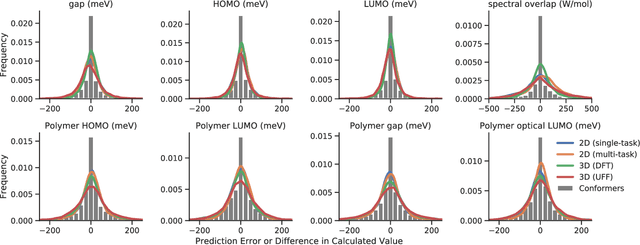
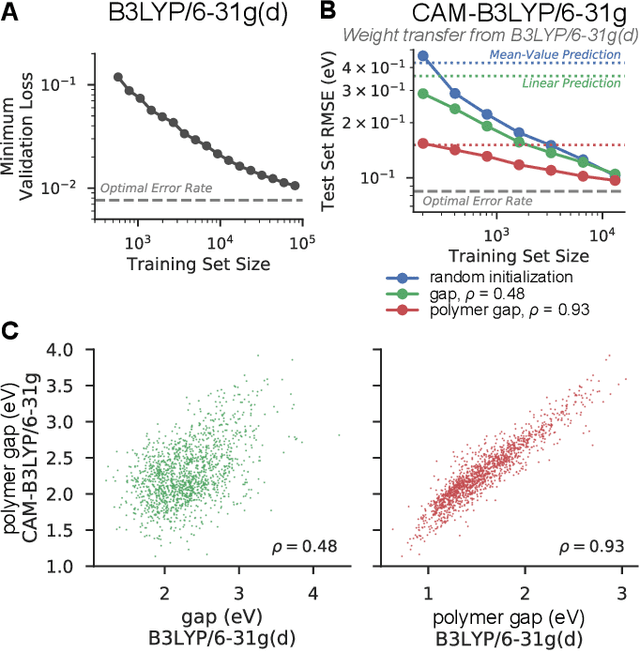
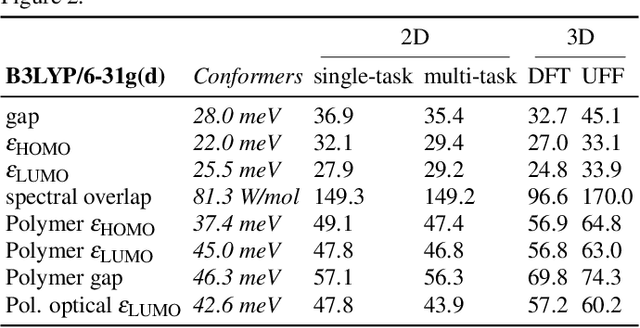
Abstract:Machine learning methods have shown promise in predicting molecular properties, and given sufficient training data ML may surpass density functional theory in computational speed and chemical accuracy. However, the most accurate machine learning methods require optimized 3D molecular geometries, limiting their applicability for high-throughput screening. We show that near-optimal results for large polymeric molecules can be obtained without optimized 3D geometry, and that trained model weights can be used to improve performance on related tasks.
Strange Beta: An Assistance System for Indoor Rock Climbing Route Setting Using Chaotic Variations and Machine Learning
Oct 03, 2011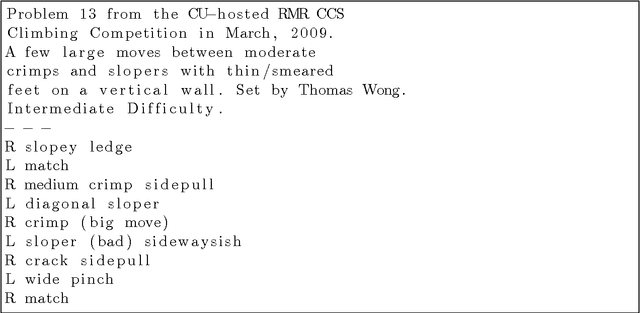

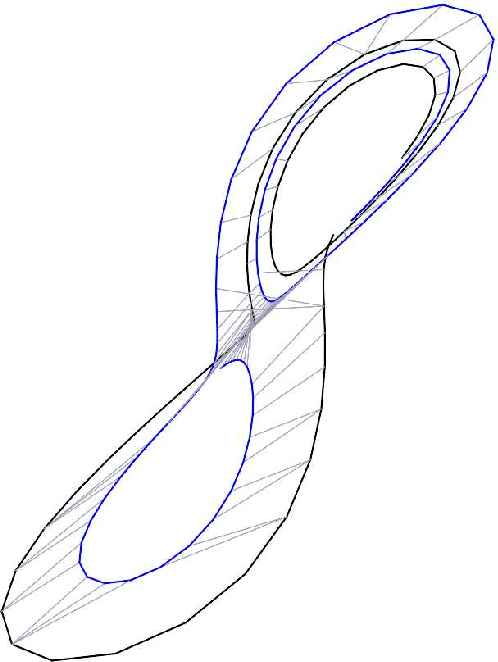

Abstract:This paper applies machine learning and the mathematics of chaos to the task of designing indoor rock-climbing routes. Chaotic variation has been used to great advantage on music and dance, but the challenges here are quite different, beginning with the representation. We present a formalized system for transcribing rock climbing problems, then describe a variation generator that is designed to support human route-setters in designing new and interesting climbing problems. This variation generator, termed Strange Beta, combines chaos and machine learning, using the former to introduce novelty and the latter to smooth transitions in a manner that is consistent with the style of the climbs This entails parsing the domain-specific natural language that rock climbers use to describe routes and movement and then learning the patterns in the results. We validated this approach with a pilot study in a small university rock climbing gym, followed by a large blinded study in a commercial climbing gym, in cooperation with experienced climbers and expert route setters. The results show that {\sc Strange Beta} can help a human setter produce routes that are at least as good as, and in some cases better than, those produced in the traditional manner.
* University of Colorado Computer Science Department Technical Report
 Add to Chrome
Add to Chrome Add to Firefox
Add to Firefox Add to Edge
Add to Edge